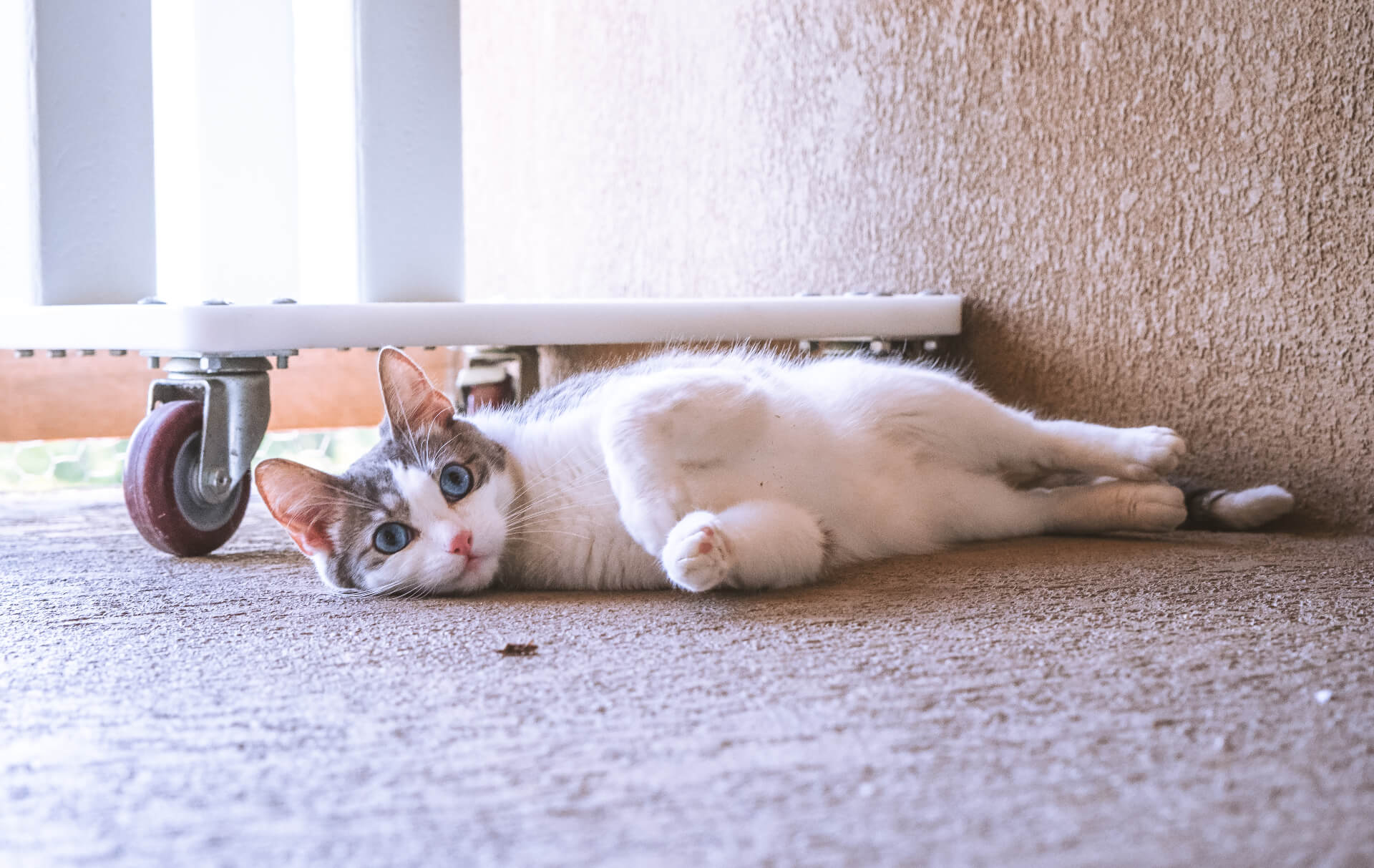
Reducing Conflict Between Cats
Cats are territorial by nature. They can live in social groups but they may take months to create new relationships. Conflict can occur when a new cat is added to the home or when something changes in the relationship between two cats that once lived together peacefully. Luckily, there are things you can do to resolve the conflict and reestablish harmony within your home.
Separate and Reduce Stress
- Separate the cats. The first step to resolve conflict between resident cats is to separate them to different parts of the house. This may mean they are restricted to different rooms or a barrier is used to divide your home into two territories. The goal of separation is to interrupt the pattern of fighting and set up controlled reintroductions.
- Contact your veterinarian. Conflict can occur between cats that have lived harmoniously in the past when one cat is ill or aging, and it is important to rule out underlying medical concerns. If there is an unresolved medical issue with one cat, problems may immediately resume even with careful reintroductions. Schedule a veterinarian visit for your cat if you notice a change in behavior including eating habits, litter box habits or hiding. Cats want to hide their weaknesses so they rarely exhibit obvious signs of sickness until they are very ill.
- Provide ample resources. Provide each cat with her own set of resources in her territory including litter box, scratching post(s), toys, dishes, perches and beds. Once the cats are reintroduced and sharing a territory you will want to maintain duplicate (or more) resources to prevent conflict. Cats often use the same resources but conflict occurs if they both want the same thing at the same time.
- How long to separate. It will take time for them to relax and recover from the chronic stress of living in conflict. The longer the cats have been fighting the more time they will need to be separated in order to recover and relax. A minimum of 2 weeks is a good starting place.
- Calming products. Fit each cat with a calming collar (Feliway and Sentry are two brands the Humane Society of Western Montana recommends). Calming sprays and aromatherapy are additional stress relief options but calming collars specifically provide more than stress relief for this type of problem. Cats maintain relationships by sharing scent so creating a common scent artificially with the collars can shape a good relationship. If calming products do not seem
Rebuild The Relationship
- Create good associations. Once both cats are acting calm and comfortable in their respective territories you can begin to reintroduce them to one another. Start by re-introducing the cats through scent. Swap their bedding and toys and feed them high-value snacks (treats, tuna or canned food) on opposite sides of a door. Repeat this step for several days before progressing.
- The first glimpses. Once both cats remain calm when they hear and smell one another through the door you can start to let them see one another. We recommend putting up a baby gate between their territories. Provide high-value snacks like dollops of canned cat food or tuna to each cat as you crack the door and allow them to glimpse one another. Place the treats/dishes far enough from the door that both cats are relaxed and able to eat. Strive to do this several times a day. Over time you should be able to move the treats closer to one another and then open the door further while both cats eat and remain calm.
- Sharing spaces. Once both cats can remain calm with a barrier in place, or show polite interest in one another, you can let them start to mingle and share territory. Don’t force either cat to move or explore and continue to supervise their interactions; both cats should return to their respective spaces when unsupervised to start. Praise good, calm interactions and reward them with treats, attention or play.
- Evaluate interactions and interrupt standoffs. During this training, watch both cats for any sign of stress or tension. Refer to the handout Understanding Feline Body Language for more information on reading cat body language. If either cat acts stressed or shows signs of fear or aggression, return to an earlier step in the training process. Repeat that step until both cats are calm again before progressing. Interrupt stare offs or tense interactions by calling one cat away, shaking a bag of treats, offering a toy, or placing a visual barrier (cardboard box, towel, etc.) between the two cats. Avoid punishing the cats for having a stare down or hissing because they may associate the punishment with one another.
- Progress at your cats’ pace. The amount of time it takes to progress through these steps will depend on how long the cats fought before you separated them, how food motivated they are, and how quickly they learn and create relationships. It may take several weeks or several months to reshape the relationship between resident cats. Throughout the reintroduction process continue to separate the cats to prevent regression when you are not able to actively supervise them.
Troubleshooting
There may be an underlying reason behind conflict between resident cats that must be addressed to prevent it from recurring. Here are common causes and solutions in addition to the above training.
- Unaltered cat. Spay and neuter all cats in your household. Intact cats are more likely to exhibit aggression to other cats. They are also at risk for a variety of health and behavior issues. The Humane Society of Western Montana offers assistance with spay/neuter for low income families. Please visit the “Services” tab for more information.
- Bored cat. If you have a very young cat, high energy cat or cat who used to go outside and no longer does, she may learn to pick on the other cats for entertainment. Provide this cat with many appropriate games, interactive toys and food toys in addition to perches and scratching posts. See our handout entitled Interactive Cat Toys and Indoor Enrichment for more ideas.
